Astronomical events of the month of April 2023
The fourth month of the year has arrived and with it another anniversary of the first human being being put into orbit, we invite you to remember this fact. The month of April invites us to enjoy some objects from the famous Messier catalogue, such as M 104 and M 3, a galaxy and a globular cluster, respectively; in addition to a couple of protagonists from the Centaur constellation, namely the globular cluster ? Cen and the galaxy Cen A. We will have the opportunity to witness a meteor shower and also several planetary approaches to the Moon, standing out one in which Mars. And, of course, we present the ephemeris of the phases of the Moon.
Man begins the conquest of space
There is no doubt that one of humanity's great dreams was always to be able to fly, once the goal was reached, the next dream was to go beyond our skies and the goal was set on the Moon.
With the great advances of the time, on April 12, 1961, the first man in space, Major Yuri Gagarin, was put on board the Vostok ship of the extinct Soviet Union (USSR). This historic 108-minute flight, in a single orbit around the Earth, paved the way for man to reach the Moon and enlarge his dreams of going to other planets and why not? to other stars.

The Elegant Sombrero Galaxy
One of the most famous spiral galaxies is Messier 104 (M 104), better known as the Sombrero galaxy due to its morphology or also as NGC 4594. It was discovered by Charles Messier and included in his catalog in 1781. This galaxy has spiral arms more or less closed (Sa-Sb) with a large bright nucleus, a prominent bulge, a dark band of gas and dust that crosses the galaxy equatorially, and that give it that unique appearance. In addition, a large number of small and diffuse objects can be seen, like a swarm in the halo, most of them globular clusters, similar to those of our own Milky Way, but in greater numbers. This luminous and massive galaxy has a total mass of about 800 billion suns, it is located 29 million light years away, in the direction of the constellation Virgo, to the southeast of the celestial sphere, and due to its apparent magnitude of 8.0, it is It can be observed with binoculars or small telescopes.
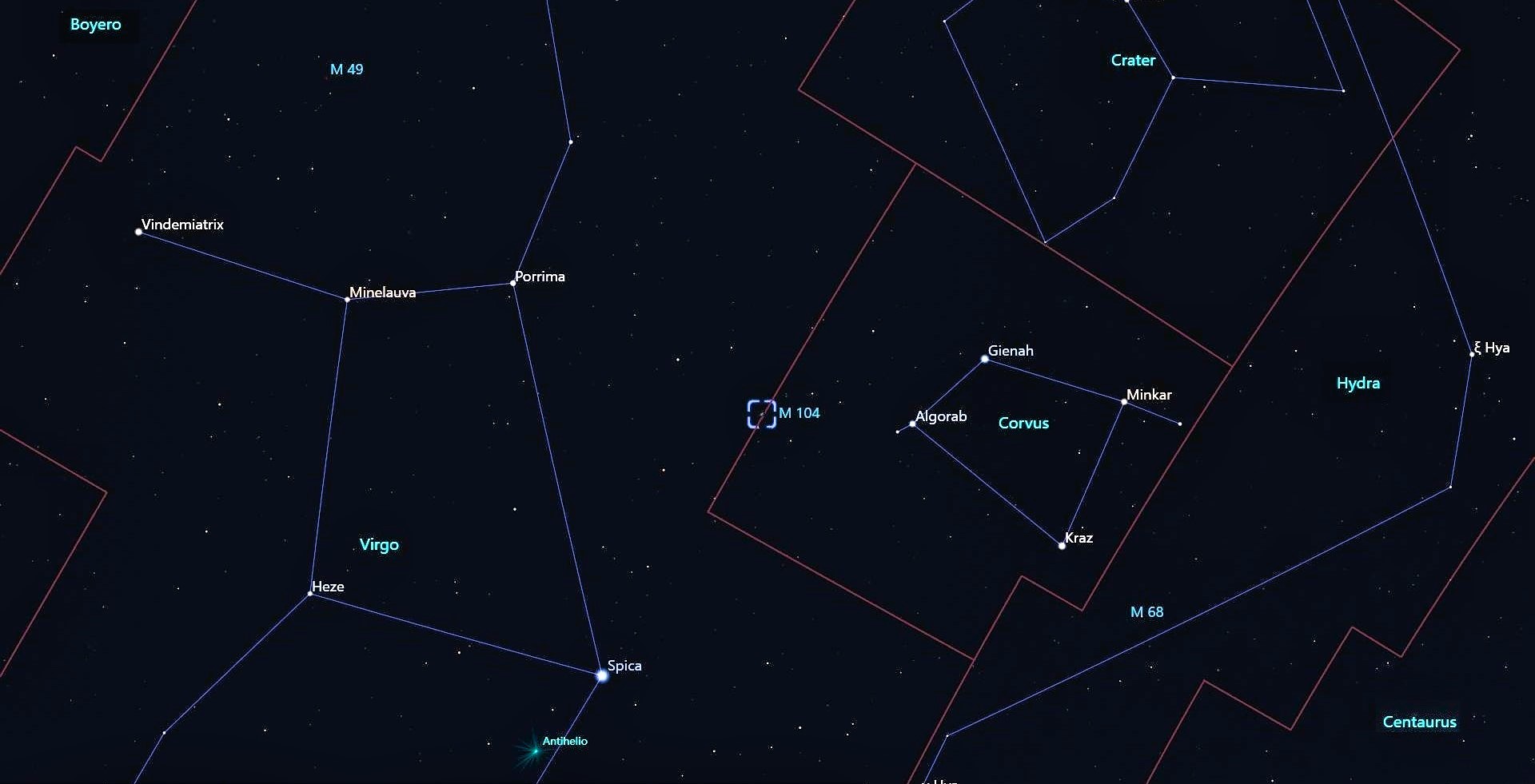
The amazing globular cluster M 3
Globular clusters are made up of several hundred thousand or millions of stars that are gravitationally bound. These almost spherical systems orbit in the galactic halos and bring together the most evolved stars in the galaxies. Their ages are usually greater than 10 billion years, so they must have formed alongside the galaxies. About 150 globular clusters are known in the Milky Way.
M 3, with an estimated age of 11 billion years, is one of the most spectacular globular clusters that we can observe in our galaxy. It was discovered by Messier in 1764, but it was William Herschel who, in 1784, described it as a nucleus of compressed and dense stars, which led him to classify it as a globular cluster. M 3 contains about 500,000 stars and is located 32,620 light years away, in the direction of the constellation of the Hunting Dogs. With a magnitude of 6.3, it can be observed with binoculars and small telescopes.
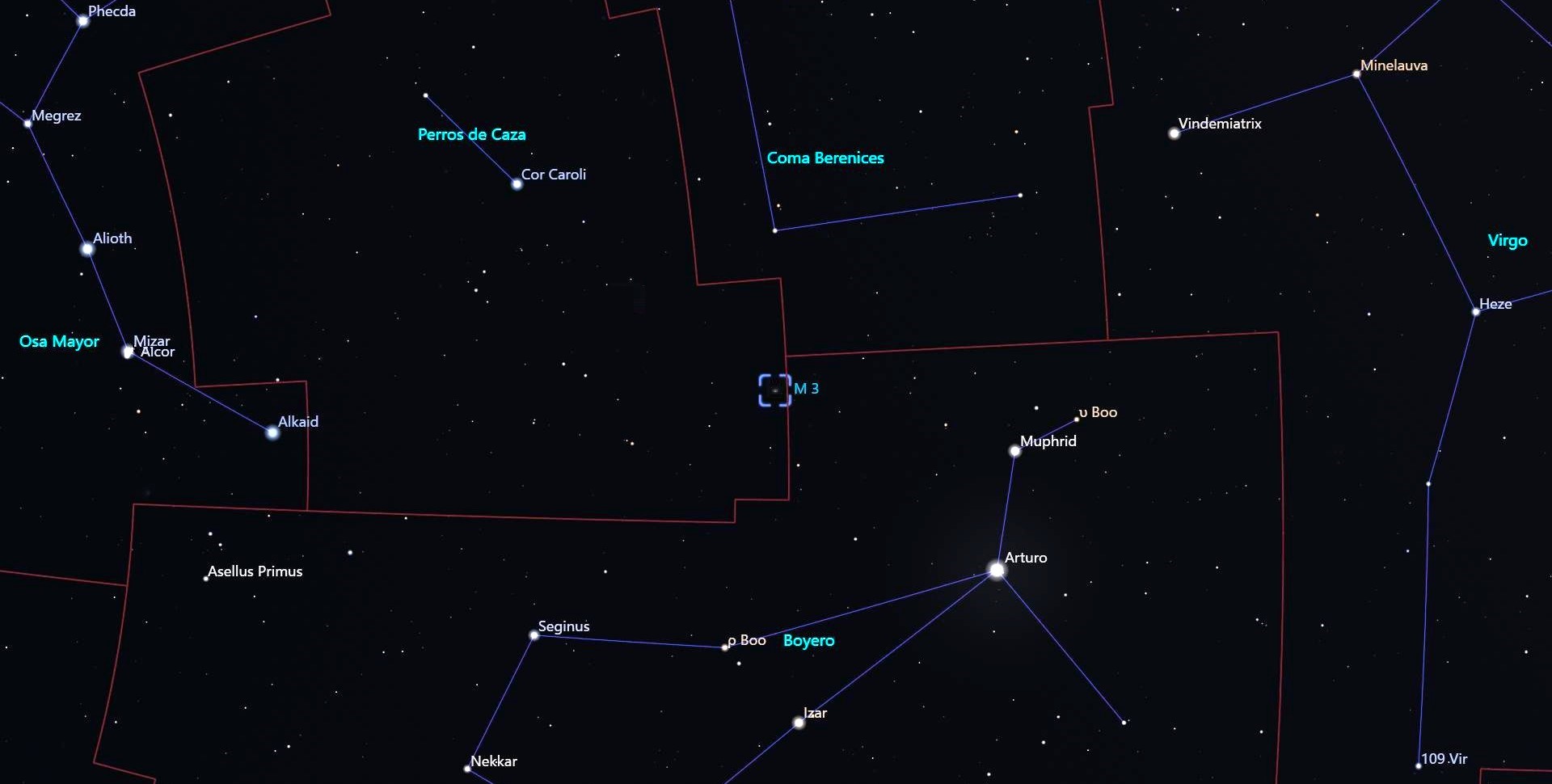
The most precious jewel of the southern skies, ? Cen
Omega Centauri, ? Cen or NGC 5139, is the largest and brightest of the globular clusters that inhabit the halo of our galaxy, with about 10 million evolved stars, much older than the Sun and concentrated in a sphere 150 light years away. in diameter, subtends an angular size as large as the full Moon.
Although globular clusters are old, ? Cen, about 12 billion years old, contains different stellar populations, with a wide variety of ages and chemical abundances, conceiving it as a peculiar cluster, which could be the remnant core of the merger of a dwarf galaxy with the Milky Way.
? Cen is located in the direction of the constellation Centaurus, a southern constellation, 16,000 light-years from us and, despite its magnitude of 3.7, can only be seen with the naked eye in really dark skies at latitudes less than 22°, but with binoculars or small telescopes it is possible to observe it towards the south southeast of the celestial sphere.
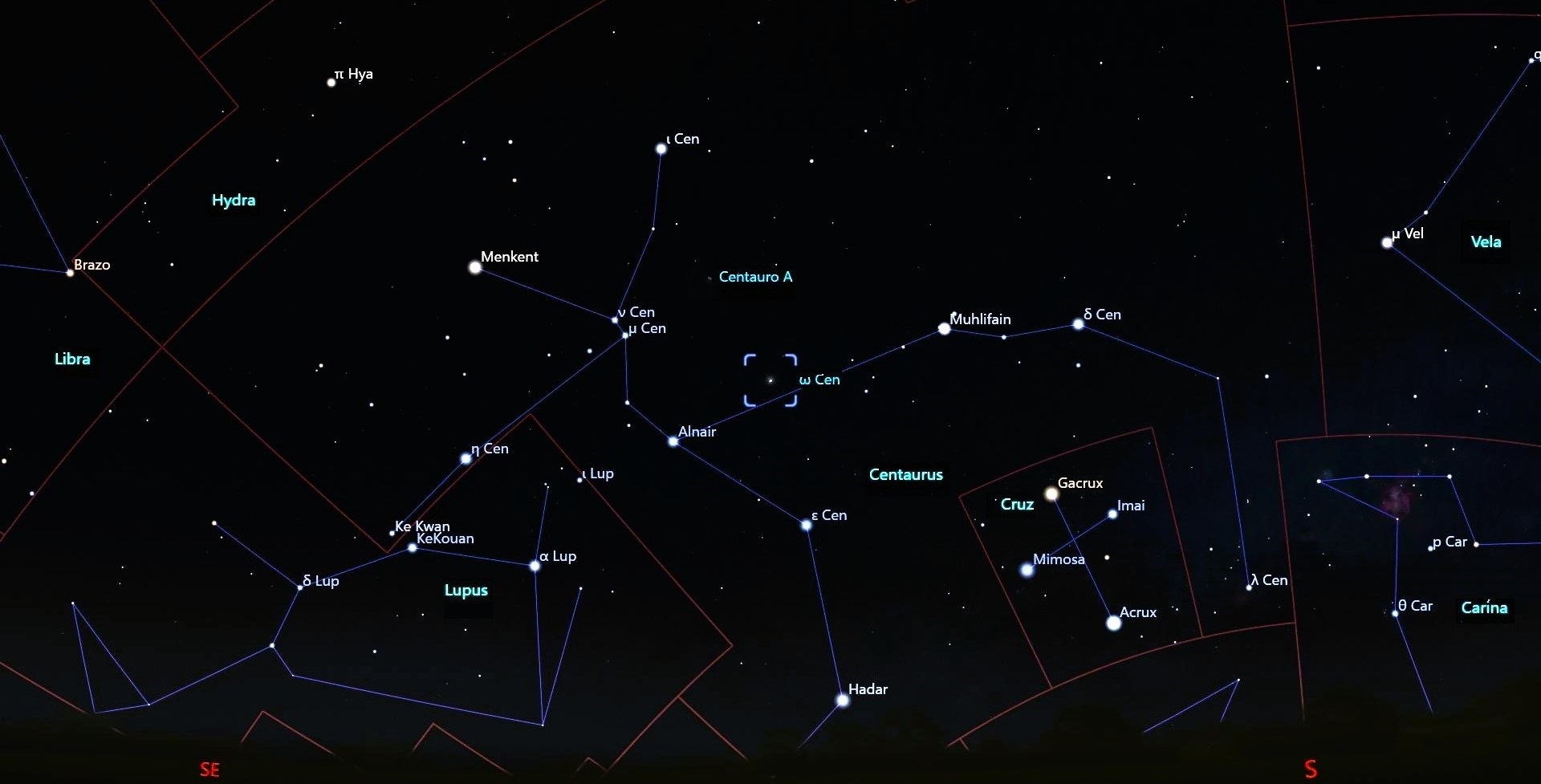
A very spatial “burger”
The morphology of the peculiar galaxy Centaurus A or NGC 5128, has led it to receive the nickname of the Hamburger galaxy, since large amounts of gal and dust are observed that obscure the central part of the galaxy and an intense glow that highlights said dark stripe. The central gas and dust reveal a vigorous stellar formation, as can be seen through the presence of red clouds of hydrogen and many blue stars, located at the end of the dark band, generating the high brightness of its ends. The characteristic appearance of this giant galaxy is believed to be the result of the merger of a giant elliptical galaxy with a smaller spiral.
Centaurus A, was discovered by James Dunlop from the Parramatta Observatory in New South Wales, Australia, in 1826. It was the first galaxy to be considered a radio source and, furthermore, it is the fifth brightest galaxy in the sky with a magnitude of 6.8, located almost 16 million light years away, this makes it an easy object to identify and observe with large aperture binoculars or small telescopes, towards the south southeast of the celestial sphere.
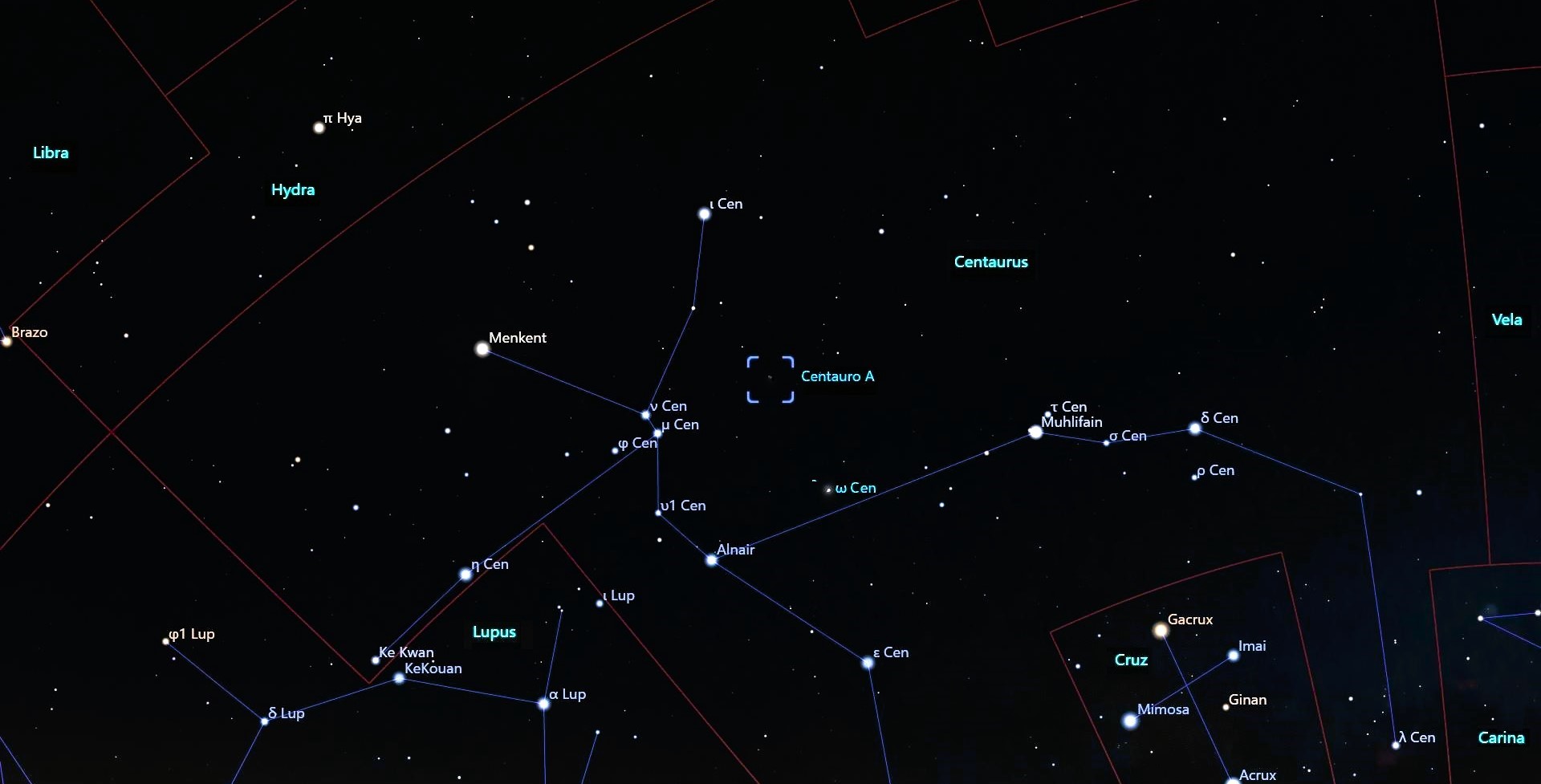
The Lyrids with radiant in Hercules
We have all heard of meteor showers and many believe that they are actually stars that fall from the firmament. Nothing more wrong than this. Actually, it is a phenomenon resulting from the entry, into our atmosphere, of a particle of matter at high speed, which causes the disintegration of the particle by its interaction with the air molecules, producing a large luminous trace.
At certain times of the year a higher than normal rate of meteor appearance can be seen from some regions of the sky, these events are generally associated with the remains of comet tails or asteroids.
These regions from where the maximum number of meteors seem to come are known as radiant, and depending on the constellation in which they are located, they are assigned the name. For example, the Lyrid meteor shower, which is active between April 16 and 25, with a maximum on April 22, with a maximum observable rate of 18 meteors per hour, the radiant is in the direction of the constellation Lyra, (between Lyre and Hercules). The Lyrids are caused by comet C/1861 G1 (Thatcher) and their best visibility will be at sunset on the 22nd and until sunrise on the 23rd, towards the northeast of the celestial sphere.
Likewise, it is worth remembering that to see the meteor shower we do not require any instrument, it is only necessary a dark place, clear skies and a mat to lie on your back and contemplate the celestial vault.
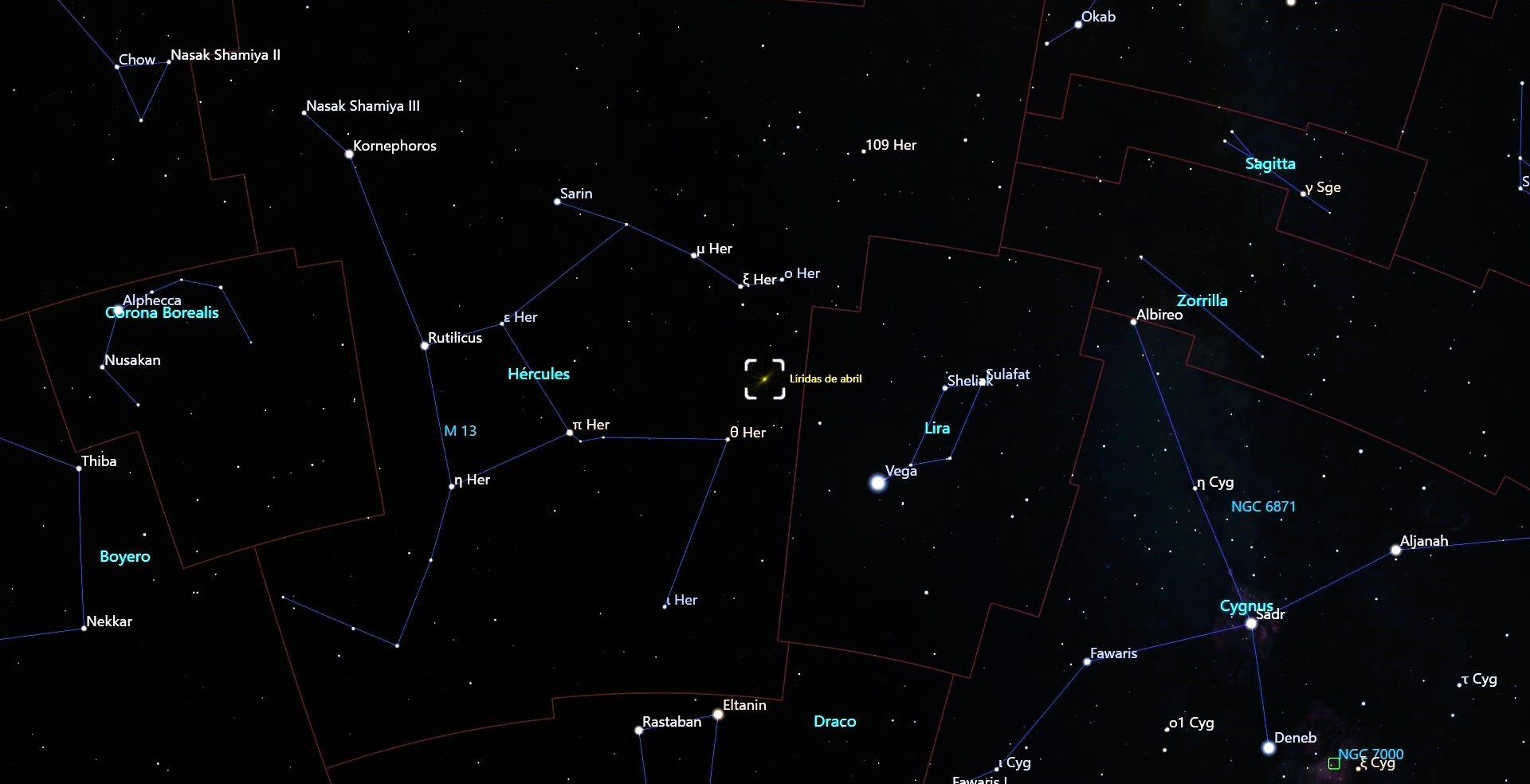
Conjunction of the Moon and Mars
Let's start by establishing what a conjunction is. A celestial conjunction takes place when two or more objects appear to be very close in the sky, but the essential condition is that they share one of their coordinates, the so-called right ascension. It must be remembered that, in the equatorial coordinate system, we have right ascension and declination; the right ascension is equivalent to the longitude on the Earth's surface, projected on the celestial sphere and the declination is equivalent to the terrestrial latitude, in the same way, projected on the celestial sphere.
On April 25, at 8:19 p.m. in central Mexico, the Moon will be in conjunction with the red planet. Our satellite will pass at 3°13' north of Mars, in the direction of the constellation Gemini.
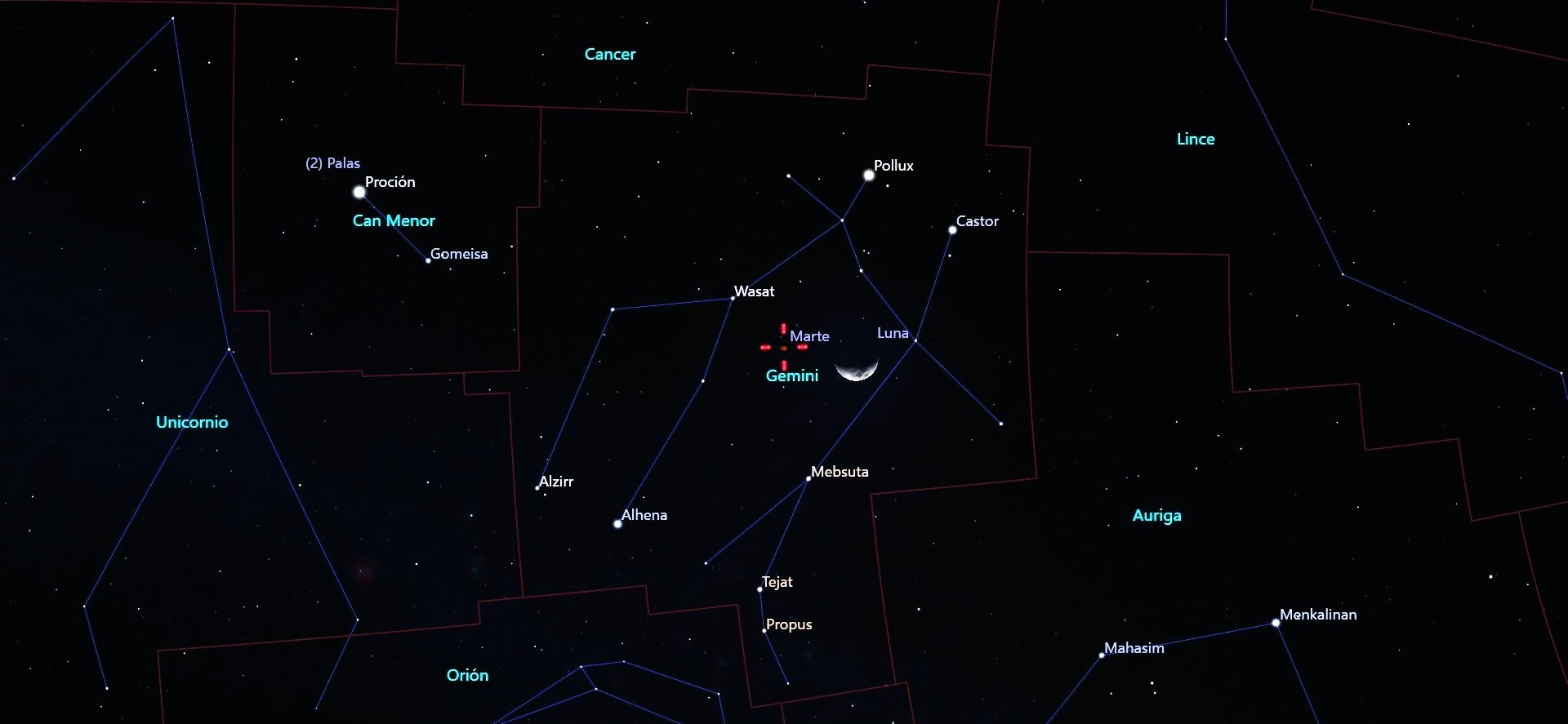
Phases of the Moon (Central Mexico time).
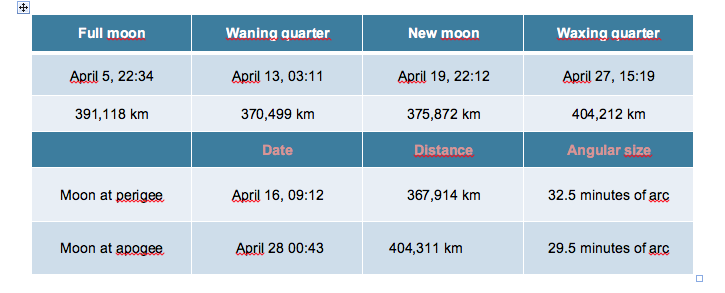
Watch the video: https://youtu.be/U2-9FEJMQFw
Contacts:
Dr. Agustín Márquez Limón (amarquez@inaoep.mx), Coordinación de Astrofísica-INAOE
Dr. Vicente Hernández Hernández (planetariodecozumel@gmail.com), Red de Planetarios del Estado de Quintana Roo
Dr. Raúl Mújica García, (rmujica@inaoep.mx), Coordinación de Astrofísica-INAOE y Noche de las Estrellas
Luis Enrique Erro # 1, Tonantzintla, Puebla, México, Código Postal 72840, Tel: (222) 266.31.00, difusion@inaoep.mx
This work is licensed under a Creative Commons Attribution-NonCommercial-NoDerivs 2.5 Mexico License.


